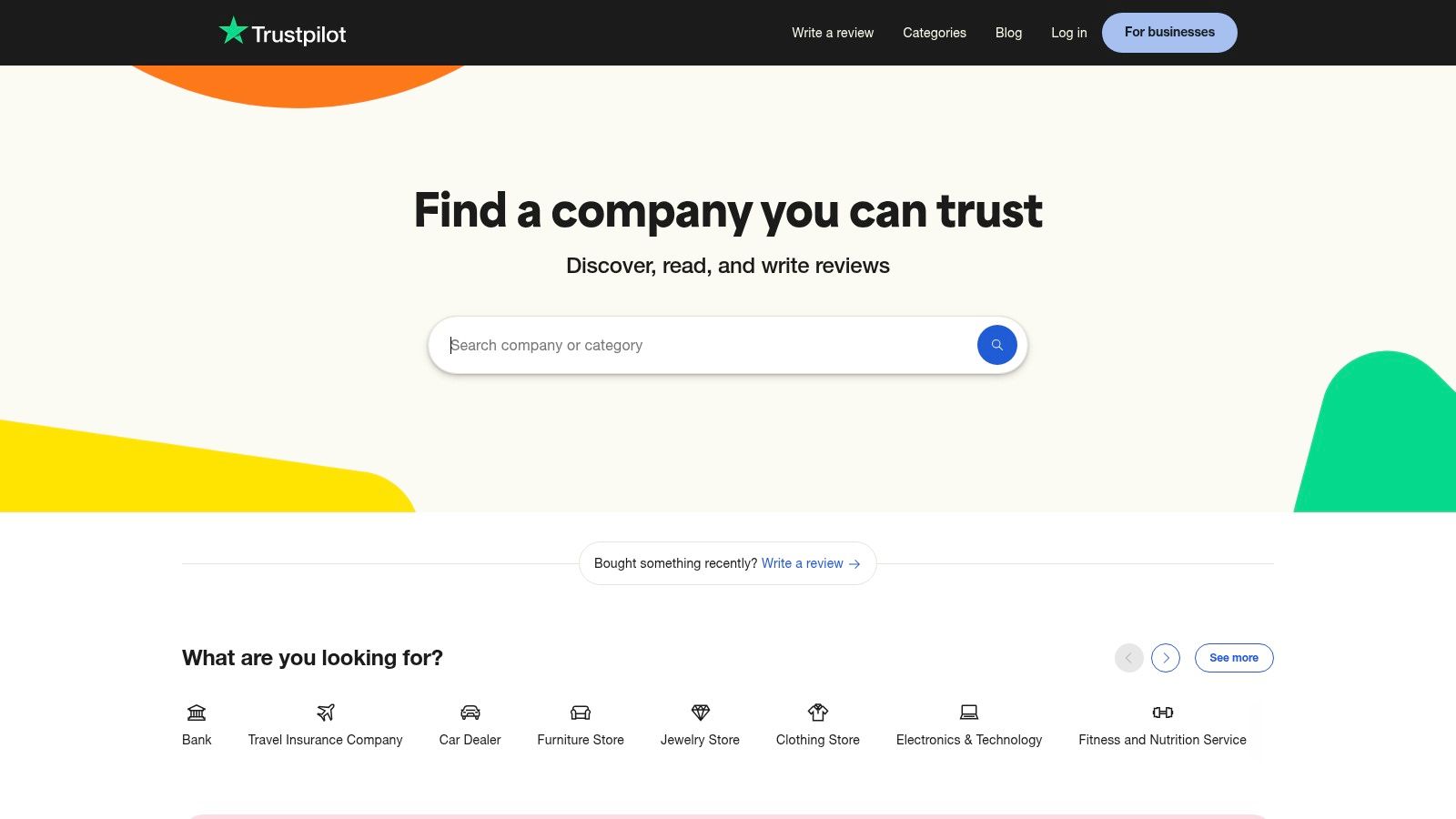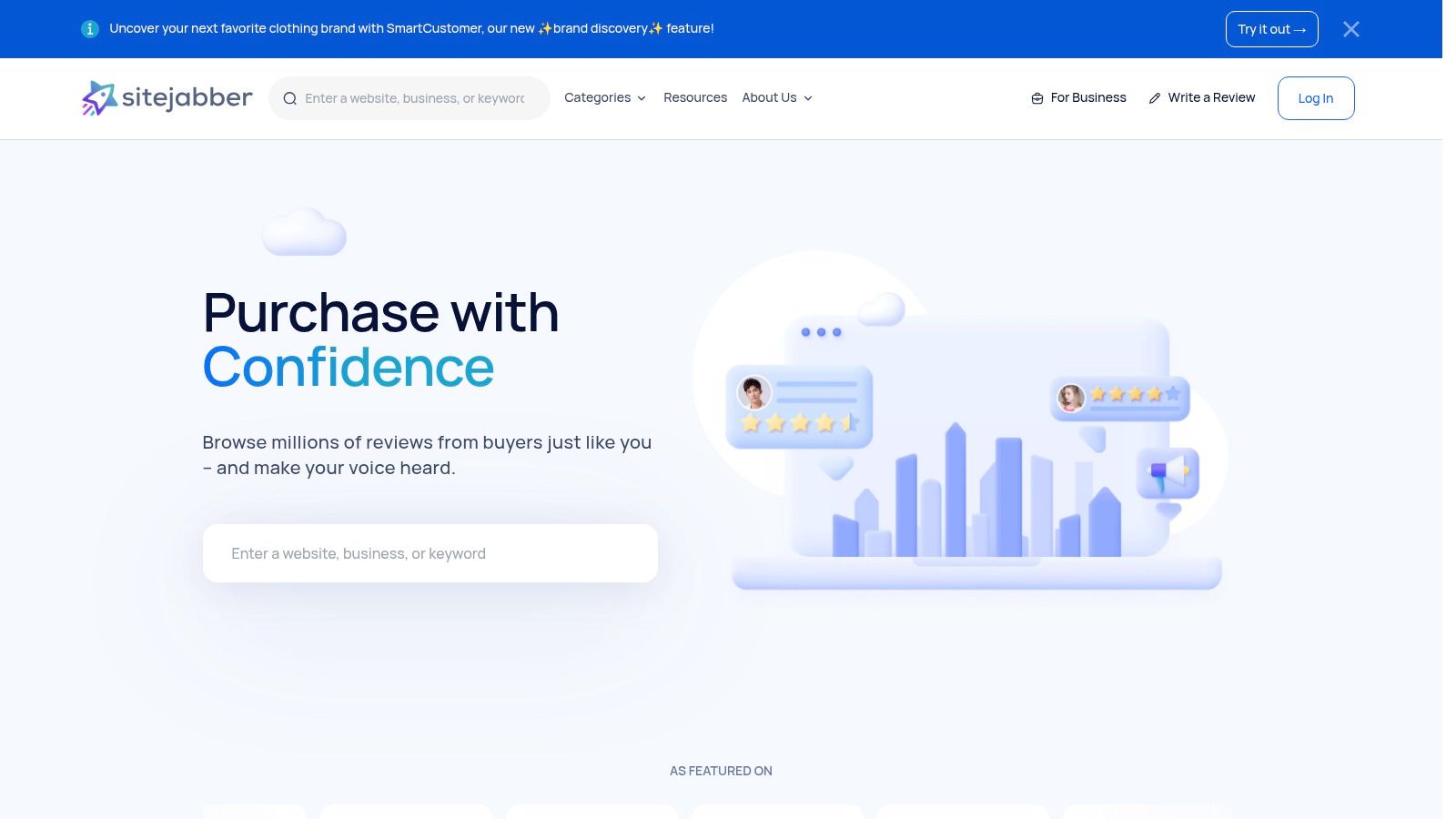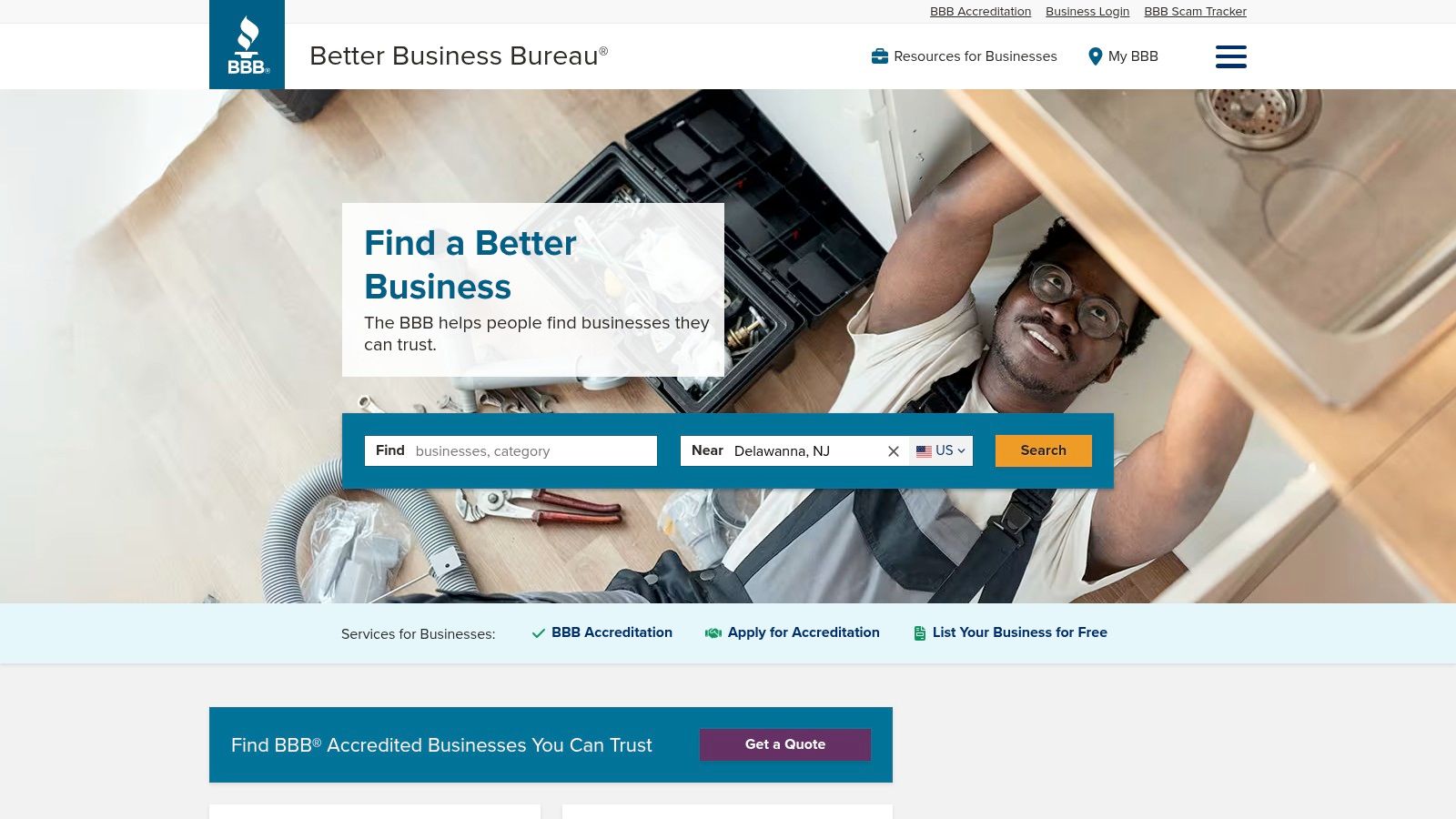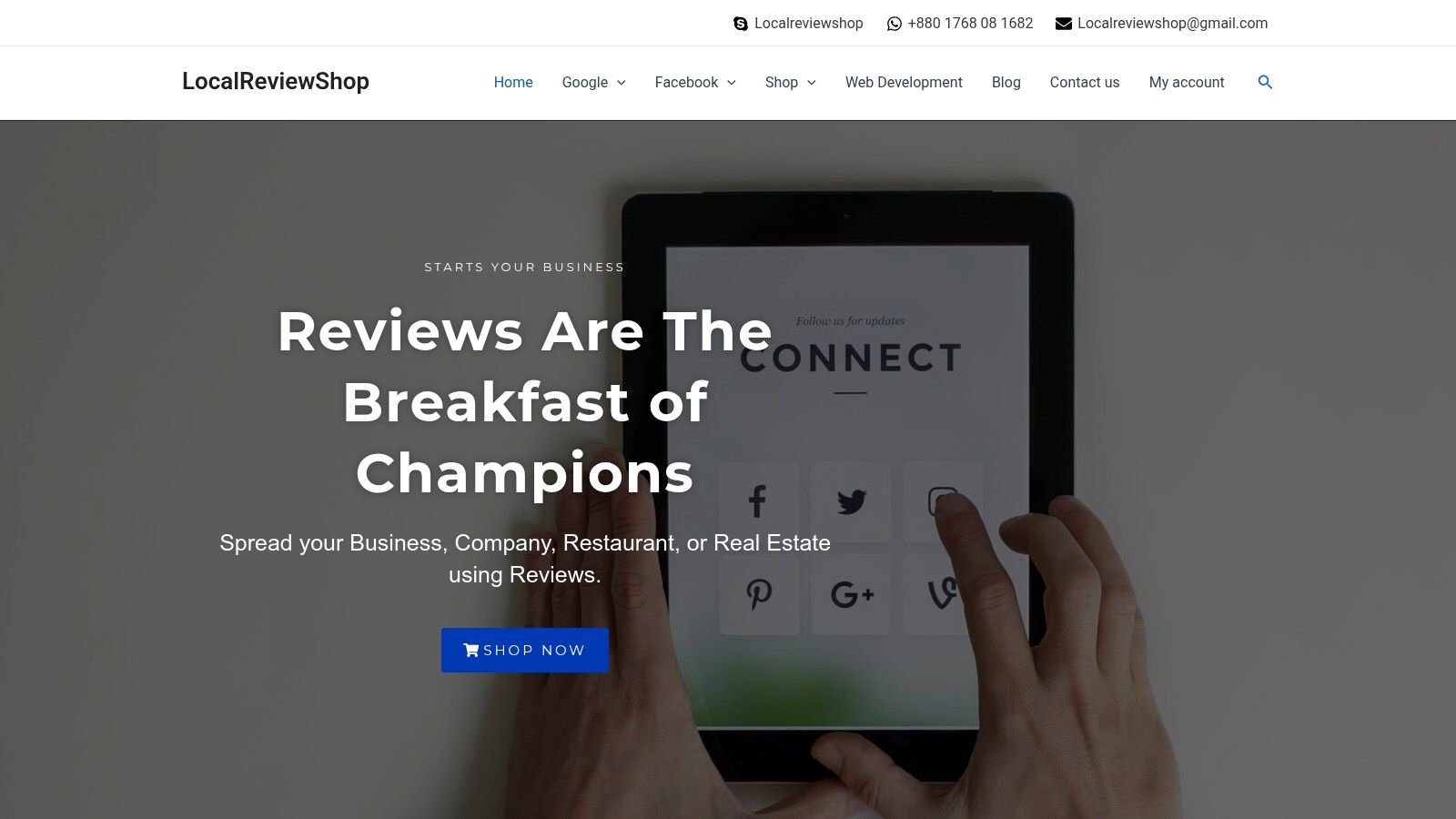Capterra Review: Key Insights for Surva.ai in 2025
Read our Capterra review to discover essential insights about Surva.ai's features and benefits. Find out why it's a top choice for 2025!

In the competitive SaaS landscape, user feedback is gold. But staring at a page of star ratings only tells part of the story. A single Capterra review can contain a wealth of strategic information, but only if you know how to analyze it correctly. To truly understand a product's impact, you need to dig deeper into the 'why' behind the user's words.
This article moves beyond surface-level ratings by dissecting real Surva.ai Capterra review excerpts. We will analyze direct quotes from actual users, from startup founders to enterprise product managers, to uncover the specific features driving retention and the pain points that lead to churn. You will learn how to extract actionable strategies directly from customer feedback.
Prepare for a strategic breakdown of what makes a feedback platform like Surva.ai essential, not just another tool. We'll explore how specific features, like churn deflection flows and automated testimonial collection, translate into tangible business growth. This analysis offers a masterclass in leveraging the user's voice to build a better product and a stronger business. Each example will include screenshots and direct links for deeper exploration.
1. Surva.ai: The AI-Powered Survey & Lead Funnel Specialist
Surva.ai has carved out a distinct niche for itself by focusing on conversational AI to create surveys and lead funnels. Unlike traditional form builders, Surva.ai leverages a chat-like interface to engage users, aiming to boost completion rates and gather more nuanced data. This approach is a significant departure from static forms, making it a standout option for businesses prioritizing user experience and engagement.
Strategic Analysis of a Capterra Review
Let's dissect a specific Capterra review that highlights the platform's core value.
The Review Excerpt: "The chat interface is a game-changer for our lead qualification. We replaced a long, boring form with a Surva.ai chatbot and our lead quality shot up. People actually answer all the questions, and the conditional logic lets us qualify them in real-time. It feels less like a form and more like a conversation." - Verified Capterra User, Marketing Manager.
This review perfectly encapsulates Surva.ai's unique selling proposition. The user explicitly points out the shift from a passive form-filling exercise to an active, conversational engagement.
Key Insights:
- Engagement Over Interrogation: The "conversation" aspect is crucial. It reduces user fatigue and the intimidation factor of long forms.
- Real-Time Qualification: The mention of "conditional logic" is key. It demonstrates how the tool isn't just for data collection but for active business processes like lead scoring and routing.
- Improved Data Quality: By making the process engaging, users are more likely to provide complete and thoughtful answers, leading to higher-quality data for sales and marketing teams.
Actionable Takeaways
For SaaS founders and marketing teams, this Capterra review offers a clear playbook:
- Identify High-Friction Forms: Pinpoint where your longest, most critical forms are causing user drop-off (e.g., demo requests, detailed onboarding).
- Reframe as a Conversation: Use Surva.ai to script a conversational flow. Instead of a field labeled "Company Size," the chatbot could ask, "How many people are on your team?"
- Leverage Conditional Logic: Implement branching logic to tailor the conversation. If a user identifies as an enterprise client, ask different follow-up questions than you would for a startup. This shows you respect their time and provides a personalized experience, a recurring positive theme in many a Capterra review for top-tier software.
Surva.ai's focus on conversational data capture makes it an excellent tool for those looking to innovate beyond the standard web form. Explore their features and start building more engaging funnels at Surva.ai.
2. G2: The Peer-to-Peer Review Powerhouse
While this listicle focuses on interpreting a Capterra review, it's crucial to acknowledge its primary competitor and counterpart, G2. G2 operates as a massive peer-to-peer review ecosystem, providing user-generated insights for thousands of software products. Its signature "G2 Grid" reports visualize a product's market presence against user satisfaction, offering a quick yet powerful benchmark for software buyers.
Strategic Analysis of a Capterra Review (on a Competitor)
Let's dissect a review that, while not on G2, highlights the kind of user sentiment G2 excels at capturing. Imagine this review appearing for a project management tool on either platform.
The Review Excerpt: "We switched from a legacy system that was clunky and universally hated by the team. The new tool is intuitive, but what really sold us was seeing dozens of reviews from companies our size, in our industry. It wasn't just about features; it was about seeing proof that people like us were successfully adopting it. That social proof was more valuable than any sales demo." - Verified User, Operations Director.
This review perfectly illustrates the core value of comprehensive review platforms like G2 and Capterra. The buyer's decision wasn't based on a feature checklist alone but on community validation and context.
Key Insights:
- Context is King: The user didn't just need a tool; they needed a tool proven to work for a specific company profile ("companies our size, in our industry").
- Social Proof Over Sales Pitch: This feedback shows that authentic, peer-driven validation can be more persuasive than a polished sales presentation.
- Adoption as a Feature: The user’s concern was not just functionality but successful team adoption, a qualitative metric that only peer reviews can effectively convey.
Actionable Takeaways
For SaaS leaders, this insight is a mandate to actively manage your presence on these platforms:
- Segment Your Review Requests: Don't just ask all customers for a review. Actively encourage users from specific, high-value industries or company sizes to share their experiences.
- Highlight "Fit" in Marketing: Use review snippets in your marketing that speak to specific use cases. Instead of "Customers love us," try "See why marketing agencies with 50+ employees choose us."
- Analyze Competitor Reviews: Use G2 to study the reviews of your competitors. A recurring negative theme in a competitor's Capterra review or G2 profile is an opportunity for you to highlight your strength in that area.
G2's extensive database makes it an indispensable resource for competitive analysis and understanding market sentiment. Explore software categories and gain deeper insights at G2.com.
3. Trustpilot: The Global Hub for Consumer Trust
Trustpilot operates as a massive, open-to-all consumer review website, creating a global stage where customers can share their experiences with businesses across countless industries. Its core principle is transparency, offering an unfiltered look at public sentiment through a vast database of user-generated reviews. For software companies, it provides a high-volume, public-facing complement to more B2B-focused platforms like Capterra.

Strategic Analysis of a Capterra Review
Let's examine a Capterra review from a business user to understand Trustpilot's value from a company's perspective.
The Review Excerpt: "We started using Trustpilot to build social proof on our website. It's incredibly powerful. The platform makes it easy to invite customers to leave a review after a purchase. We display the widget on our pricing page, and it has definitely helped with conversion rates. Responding to both good and bad reviews shows we're engaged and builds trust." - Verified Capterra User, eCommerce Director.
This review highlights Trustpilot's role not just as a review site but as an active marketing and trust-building tool for businesses. The focus is on leveraging customer feedback to drive commercial outcomes.
Key Insights:
- Active vs. Passive Collection: The user mentions actively "inviting customers," showing a proactive strategy to build a repository of social proof rather than passively waiting for it.
- Conversion Asset: The review explicitly connects the Trustpilot widget to "helped with conversion rates," positioning it as a tangible revenue-driving tool, not just a reputation management platform.
- Reputation Management as Engagement: The act of responding to negative reviews is framed as a positive, demonstrating transparency and commitment to customer service, which in turn builds more trust.
Actionable Takeaways
SaaS founders and marketing teams can learn from this Capterra review to use Trustpilot more strategically:
- Integrate Review Invitations: Automate review requests within your customer journey. Send an invitation via email or in-app notification a few days after a successful onboarding or a positive support interaction.
- Deploy Trust Widgets at Key Funnel Points: Don't just place the Trustpilot widget in your footer. Test its placement on high-intent pages like your pricing, demo request, and checkout pages to directly address customer hesitation.
- Create a Public Response Policy: Establish clear guidelines for responding to all reviews. Acknowledge positive feedback and publicly address negative feedback with a solution-oriented approach. This public conversation can be more powerful than the original review itself, as any good Capterra review analysis will show.
Trustpilot excels at generating a high volume of public-facing social proof that can be directly leveraged to build credibility. See how you can build your brand's trust at Trustpilot.
4. Sitejabber: The Broad-Spectrum Consumer Review Hub
Sitejabber positions itself as a wide-reaching, community-driven platform where consumers share reviews on virtually any business, not just software. This broad scope, which includes everything from e-commerce stores to local services, makes it a different kind of research tool. While a Capterra review is laser-focused on B2B software, Sitejabber offers a more holistic view of a company's overall consumer reputation.

Strategic Analysis of a Capterra Review (Metaphorical)
While Sitejabber isn't Capterra, we can analyze its reviews through a similar strategic lens. Let's look at a typical software review found on the platform.
The Review Excerpt: "I was hesitant about this company after seeing some ads, but the reviews here on Sitejabber seemed mostly positive. It wasn't just about the software features, people talked about their customer service and billing issues. It gave me a fuller picture before I signed up." - Sitejabber User, Small Business Owner.
This comment reveals Sitejabber's unique value: context beyond the product. The user isn't just evaluating features; they are assessing the entire customer experience, a crucial element for any SaaS business.
Key Insights:
- Holistic Reputation Management: The review covers service and billing, areas a pure feature-based platform might miss. It highlights the importance of the entire customer journey.
- Consumer Trust Signal: For B2C or prosumer SaaS, a presence on a general consumer site like Sitejabber can build trust with a wider audience that may not frequent B2B-specific review sites.
- Beyond B2B: It serves as a reminder that even B2B buyers are consumers who value peer feedback on general business practices, not just software functionality.
Actionable Takeaways
For SaaS teams, the insights from Sitejabber reviews offer a different perspective than a typical Capterra review:
- Monitor Your Full-Funnel Reputation: Actively claim your Sitejabber profile. Pay attention to feedback concerning sales, support, and billing, not just the product itself.
- Encourage Comprehensive Feedback: When asking for reviews, don't just prompt users about features. Use open-ended questions that invite comments on their overall experience with your brand. Collecting these testimonials can be powerful; discover effective ways to do this using templates for testimonials.
- Use Reviews for Cross-Team Training: Share Sitejabber feedback with your support and finance teams. A review mentioning a billing surprise is a learning opportunity for the entire organization, not just the product team.
Sitejabber provides a valuable, free-to-access pulse check on your company's public perception from a broad consumer standpoint. Check out what people are saying at Sitejabber.
5. Better Business Bureau (BBB): The Trust and Ethics Arbiter
The Better Business Bureau (BBB) operates less like a typical software review site and more like a trust and ethics watchdog. It provides a unique lens by focusing on a company's integrity, complaint resolution history, and operational transparency. For businesses, being accredited by the BBB and maintaining a high rating serves as a powerful signal of reliability and customer commitment, a different kind of validation than a feature-focused software review.

Strategic Analysis of a Capterra Review
While the BBB isn't a SaaS tool itself, reviews about its value proposition are revealing. Let's analyze a review reflecting a business owner's perspective on using the BBB for their own company's reputation.
The Review Excerpt: "Getting our BBB accreditation wasn't just about putting a badge on our site. When we had a legitimate customer complaint, the BBB's mediation process was invaluable. It provided a structured, third-party framework that helped us resolve the issue fairly. This process turned a potentially negative review into a demonstration of our commitment to customer service." - Verified Capterra User, Small Business Owner.
This perspective highlights a function far beyond simple ratings. The BBB acts as a structured intermediary, which is a key differentiator.
Key Insights:
- Conflict Resolution as a Feature: The "mediation process" is the core value here. It provides a system for de-escalating conflicts and finding solutions, which is critical for B2B reputation.
- Demonstrating Accountability: Engaging with the BBB process allows a business to publicly demonstrate its commitment to resolving issues, which can be more powerful than just responding to a negative review.
- Trust Signal Beyond Features: An A+ BBB rating tells a potential customer something different than a 5-star Capterra review. It speaks to the company’s ethical foundation and reliability, not just its software’s functionality.
Actionable Takeaways
For SaaS founders and customer success teams, the BBB model provides a strategic framework for handling disputes and building long-term trust:
- Formalize Your Dispute Process: Don’t wait for a complaint to figure out your process. Create a clear, structured internal policy for handling customer disputes that is fair and transparent, mirroring the BBB's approach.
- Use Mediation as a Retention Tool: When a serious issue arises, offer a structured conversation with a neutral third party from your team (e.g., a customer success lead not directly involved). This can prevent churn and turn a detractor into an advocate.
- Showcase Resolutions: When you successfully resolve a significant customer issue, use it as a case study (with permission). This demonstrates your company’s integrity and can be a core part of your customer retention strategies, showing you value the relationship beyond the initial sale.
The BBB emphasizes that how a company behaves is as important as what it sells. Find out more about their accreditation and services at bbb.org.
6. LocalReviewShop: The Reputation Management Cautionary Tale
LocalReviewShop operates in a controversial corner of the digital marketing world, offering packages for businesses to purchase reviews on various platforms. The service proposes a quick fix for building online credibility and enhancing reputation by directly populating review sites, including Capterra, with positive feedback. This model is designed for businesses seeking a rapid boost to their online ratings, bypassing the often slow process of organic review collection.

Strategic Analysis of the Offering's Impact
While there are no traditional user reviews for such a service on Capterra itself, we can analyze its value proposition and the inherent risks it presents. The core offering is a shortcut to social proof, a powerful psychological trigger for potential buyers.
The Implied Promise: "Instantly enhance your company's Capterra profile with custom, positive reviews. Our packages are tailored to meet your specific needs, boosting your rating and attracting more customers overnight." - Paraphrased value proposition from their service model.
This promise targets a common pain point for new or struggling SaaS companies: a lack of social proof. The idea is to manufacture credibility to kickstart growth.
Key Insights:
- Violation of Trust: The fundamental flaw is the violation of platform policies. Capterra, like all major review sites, explicitly forbids paid or fake reviews. This is a high-risk strategy.
- The Authenticity Gap: While the goal is to appear credible, sophisticated buyers can often spot inauthentic patterns in reviews, leading to the opposite effect: a loss of trust.
- Short-Term Gain vs. Long-Term Risk: A temporary ratings boost can be negated entirely by account suspension, public exposure, or penalties from the review platform, causing irreparable brand damage. Any discussion about a Capterra review must acknowledge the platform's commitment to authenticity.
Actionable Takeaways
For SaaS founders and marketing teams, the existence of services like this serves as a critical lesson in brand management:
- Prioritize Authentic Feedback Channels: Instead of seeking shortcuts, invest in building a robust, ethical review generation engine. Prompt happy customers for reviews post-onboarding or after a successful support interaction.
- Understand the Platform's Rules: Read the terms of service for any platform you operate on, especially review sites like Capterra. Ignorance is not a defense, and the penalties are severe.
- Invest in Your Product, Not Fake Praise: The most sustainable way to get a positive Capterra review is to have a product and customer service experience that genuinely earns it. Resources are better spent on product development and customer success than on activities that could jeopardize your company's future.
While LocalReviewShop presents a tempting offer, it represents a significant ethical and business risk that responsible brands should avoid. Find out more about their offerings at LocalReviewShop.
7. CommonNinja: The Social Proof Amplifier
CommonNinja takes a different approach to leveraging Capterra reviews by focusing on distribution rather than generation. It offers a suite of embeddable widgets, including a highly customizable Capterra Reviews Widget. This tool allows businesses to pull their existing Capterra reviews directly onto their own website, transforming positive customer feedback into powerful, on-site social proof. This is crucial for building trust and credibility with potential customers at the point of decision.

Strategic Analysis of a Capterra Review
While CommonNinja itself is reviewed, its core value is in showcasing other reviews. Let's analyze a hypothetical review of a SaaS company that effectively uses a CommonNinja widget, which we can infer from the user's journey.
The Inferred Experience: "I was on the fence about their software, but seeing all the positive Capterra reviews embedded right on their pricing page gave me the confidence to sign up. I didn't have to leave their site to check a third-party platform. It felt transparent and reassuring to see unfiltered feedback from real users displayed so openly." - Hypothetical User, Small Business Owner.
This perspective highlights the strategic power of placing social proof at critical conversion points. The user's hesitation was overcome not by a sales pitch, but by the authentic voices of existing customers.
Key Insights:
- Reduced Conversion Friction: By keeping visitors on-site, the widget prevents the potential distraction or drop-off that occurs when a user leaves to check a Capterra review page.
- Borrowed Trust: The Capterra brand carries significant weight. Displaying its reviews lends third-party credibility to the company's own website, making marketing claims more believable.
- Transparency Builds Confidence: Proactively showing reviews, rather than hiding them, signals confidence in the product and a commitment to customer feedback.
Actionable Takeaways
For marketing and growth teams, the strategy enabled by CommonNinja is straightforward yet powerful:
- Identify High-Impact Pages: Pinpoint pages where user trust is paramount, such as pricing pages, demo request forms, or feature pages.
- Embed Relevant Social Proof: Use CommonNinja to install the Capterra widget on these pages. Customize the design to match your brand for a seamless look and feel.
- Filter for Relevancy (Optional): Use the widget's filtering capabilities to showcase reviews that mention specific features or benefits relevant to the page content, creating a more contextual and persuasive experience. This level of curated social proof is a smart way to leverage every positive Capterra review.
CommonNinja makes it incredibly easy to weaponize your hard-earned customer feedback directly on your marketing site, no coding required. See their full gallery of widgets at CommonNinja.
Top Review Platforms Comparison
From Review to Revenue: Turning Capterra Insights into Your Growth Engine
Throughout this deep dive, we've dissected not just where to find customer feedback, but how to transform it from a passive metric into an active growth strategy. The journey from a single Capterra review to tangible business results is paved with strategic analysis and the right tools. We've seen how platforms like Capterra, G2, and Trustpilot offer a treasure trove of user sentiment, while tools like Surva.ai, CommonNinja, and LocalReviewShop provide the mechanisms to manage, display, and act on that feedback.
The fundamental takeaway is this: every review, positive or negative, is a strategic asset. A glowing review isn't just a pat on the back; it's a blueprint for your next marketing campaign. A critical review isn't a failure; it's a detailed, free consultation on your product's biggest friction points. By moving beyond surface-level star ratings, you uncover the specific language your happiest customers use and the precise pain points that cause churn.
Your Actionable Roadmap: From Insights to Implementation
To translate these concepts into action, your team needs a clear, systematic approach. This isn't a one-time project but a continuous feedback loop that should be embedded into your operations.
Key strategic pillars to build upon:
- Systematize Your Listening: Don't wait for reviews to pile up. Use automated tools to monitor platforms like Capterra and G2. Create internal workflows to tag, categorize, and route feedback to the right teams, whether it's a bug report for engineering or a feature request for the product team.
- Segment and Analyze the "Why": Move past the "what" (the star rating) and dig into the "why." Group reviews by user persona, use case, or feature mentioned. This granular analysis will reveal which parts of your platform deliver the most value to your most valuable customer segments.
- Weaponize Positive Feedback: Identify your champions and their exact words. Use these powerful testimonials and specific use-case descriptions in your ad copy, on your landing pages, and within your sales collateral. This authentic social proof is far more compelling than any marketing slogan you could write.
- Operationalize Negative Feedback: Treat every piece of negative feedback as a high-priority ticket. Acknowledge it publicly to show you're listening, and then create an internal process to address the root cause. This not only prevents churn but can turn a frustrated user into a loyal advocate.
When deciding which tools to implement, consider your company's stage and primary goals. An early-stage startup might focus on a tool like Surva.ai to build a foundational review generation and management engine. A more mature SaaS company could leverage that foundation and integrate insights directly into a sophisticated CRM or BI tool, perhaps even exploring advanced user engagement tactics. Similarly, learning how to strategically implement personalized video can be a powerful tool for winning SaaS customers throughout the sales funnel with personalized video.
Ultimately, your Capterra review strategy isn't just about managing your reputation; it's about building a customer-centric culture. The insights gleaned from these platforms are your most direct line to understanding what your market truly wants. By listening intently and acting decisively, you transform customer feedback from a simple report card into your most powerful engine for sustainable growth.
Ready to stop manually chasing reviews and start building an automated feedback engine? Surva.ai helps you proactively collect, manage, and leverage reviews from Capterra and beyond, turning customer sentiment into your most valuable growth asset. Try Surva.ai today and transform your review strategy from reactive to revenue-driven.


